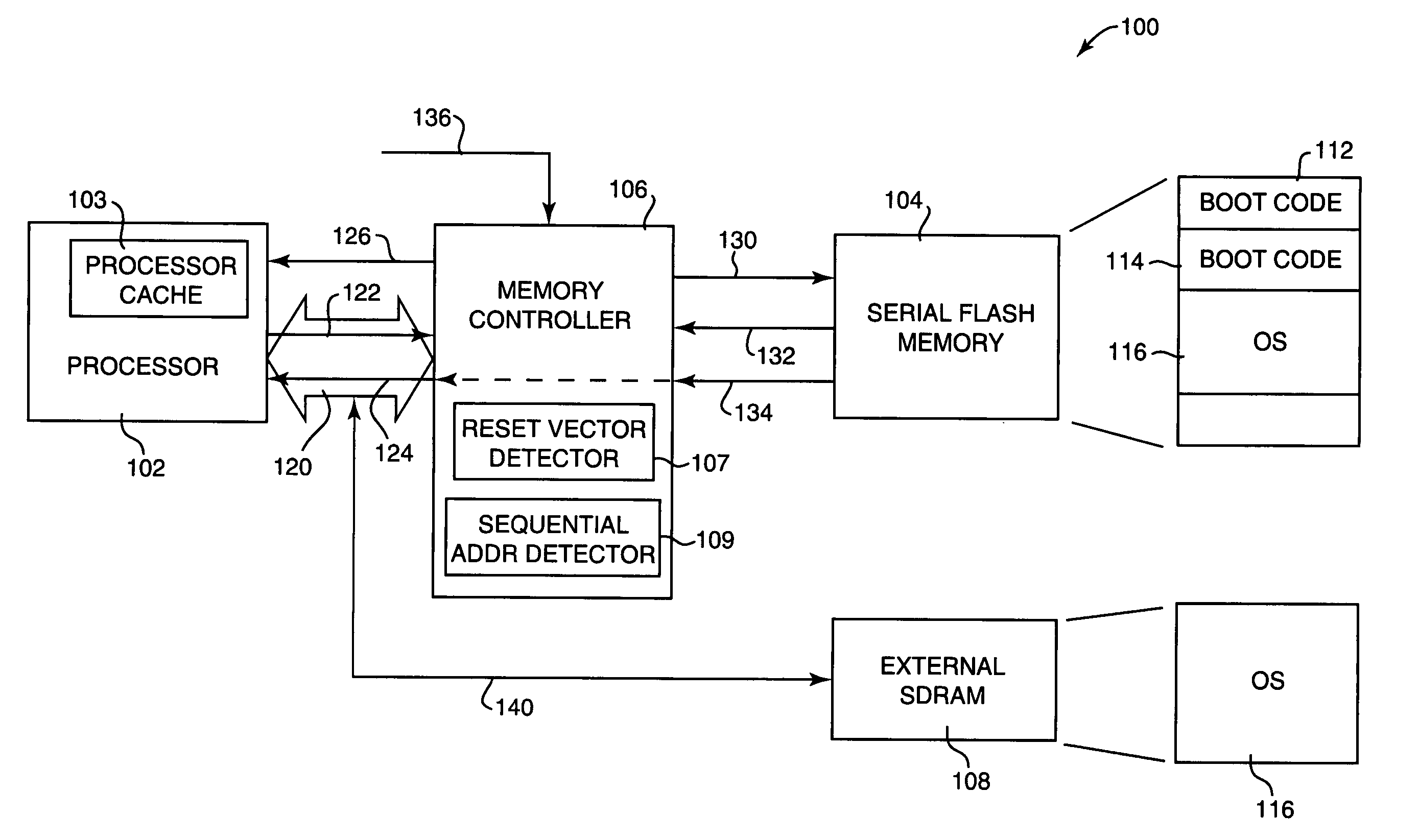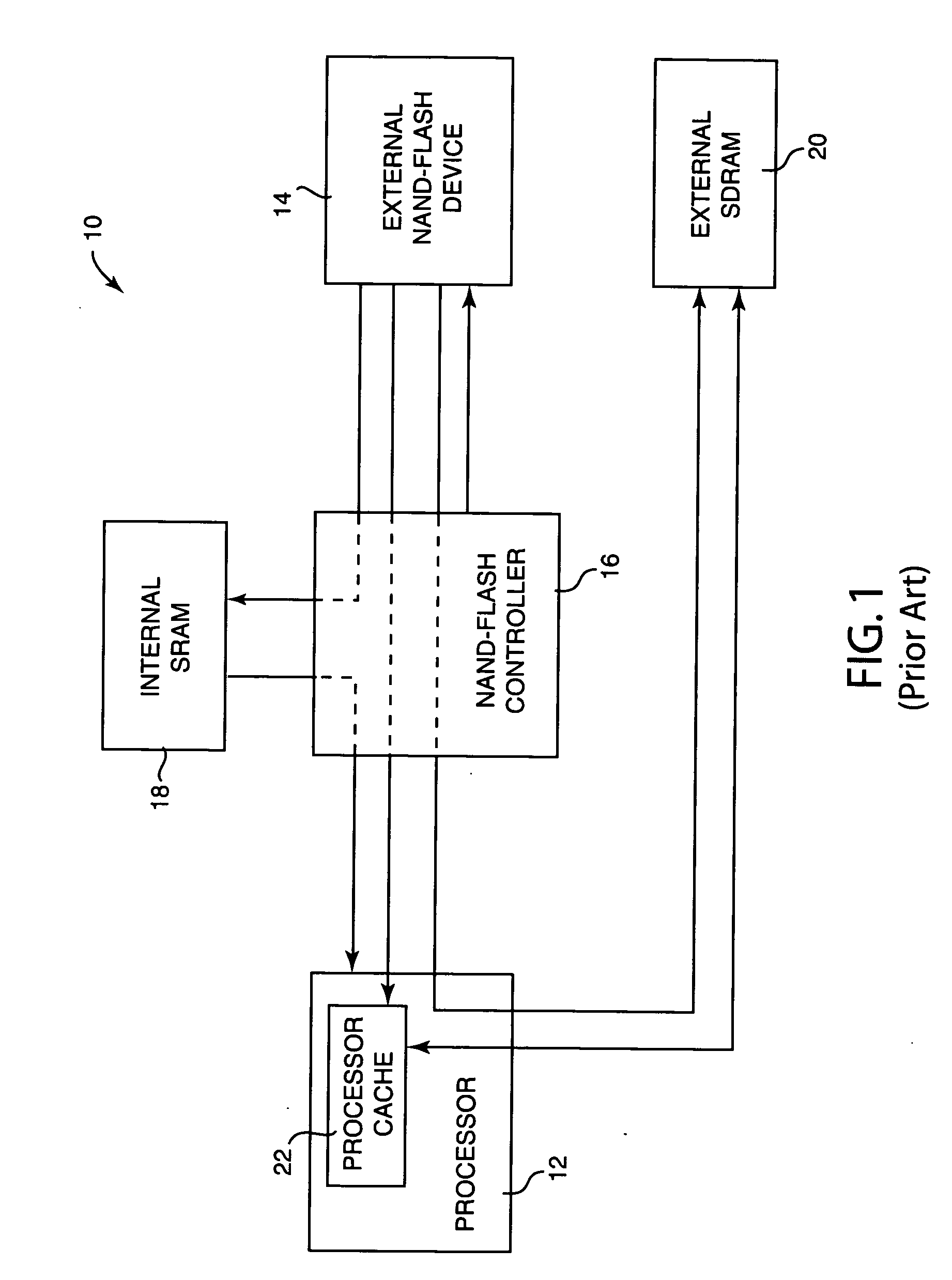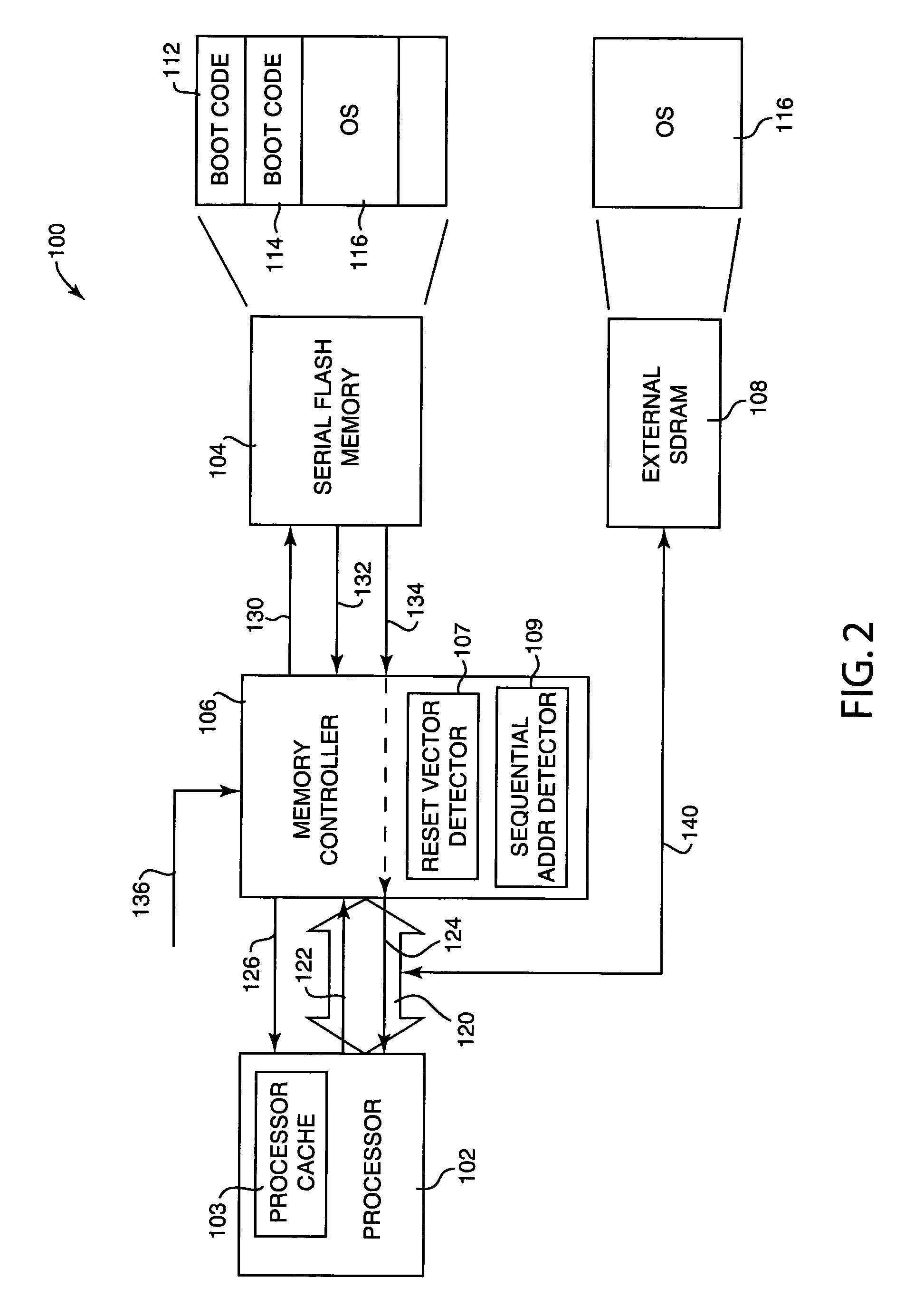Method and system for loading processor boot code from serial flash memory
a serial flash memory and boot code technology, applied in the field of memory devices, can solve the problems of complicated unrolling, waste of power and silicon die area, etc., and achieve the effect of reducing the total cost of the final system, high storage capacity, and reducing the number of parts
- Summary
- Abstract
- Description
- Claims
- Application Information
AI Technical Summary
Benefits of technology
Problems solved by technology
Method used
Image
Examples
example embodiments
[0062]FIG. 7 is a flow diagram illustrating an example method 280 for a portion of step 260 of FIG. 6, in which a processor fetch request is translated by the controller 106 to a read command and address usable by the serial flash memory device 104. This method assumes the controller 106 has access to the physical parameters of the serial flash device. The specifics for this process can vary depending on the specific components used in an embodiment.
[0063] The process begins at 282, and in step 284, the number and type of address cycles to be used is determined based on the page size of the serial flash device and on the total capacity of the serial flash device. Each address cycle provides a portion of the total address data to the serial flash device, and the serial flash device may need multiple such cycles. For example, a row address can select a page in the serial flash device, and a column address can select the byte within a page. The number of column address cycles can be b...
PUM
 Login to View More
Login to View More Abstract
Description
Claims
Application Information
 Login to View More
Login to View More - R&D
- Intellectual Property
- Life Sciences
- Materials
- Tech Scout
- Unparalleled Data Quality
- Higher Quality Content
- 60% Fewer Hallucinations
Browse by: Latest US Patents, China's latest patents, Technical Efficacy Thesaurus, Application Domain, Technology Topic, Popular Technical Reports.
© 2025 PatSnap. All rights reserved.Legal|Privacy policy|Modern Slavery Act Transparency Statement|Sitemap|About US| Contact US: help@patsnap.com



